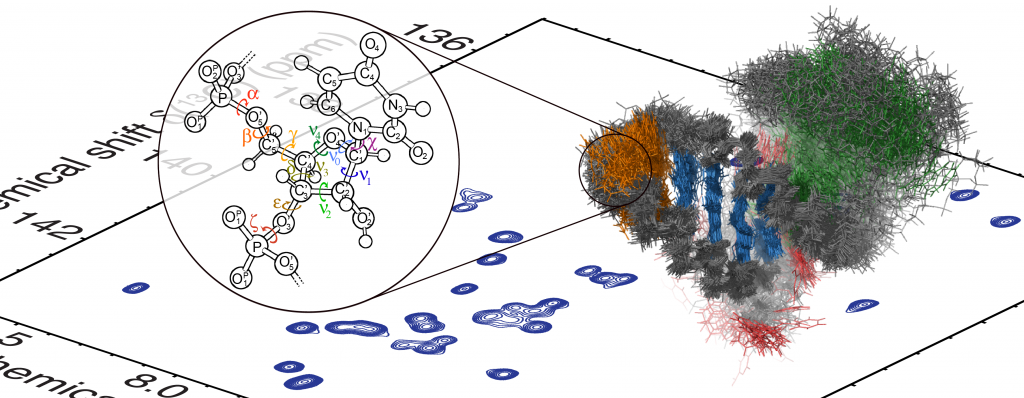Research

Linking RNA fundamental biophysics to biological function…
The recent discovery of numerous and key non-coding RNA is inducing a vast paradigm shift in today molecular biology. Earlier, RNA was considered to primarily act as the messenger between DNA and protein in the transcription and translation processes. However, recent decades have revealed an ever increasing diversity in RNA functions, spanning from ribozyme performing catalysis to riboswitches that can modulate the level of messenger RNA expression. The diversity and importance of those functions are profoundly affecting the basics rules of molecular biology.
RNA is also fascinating for its chemical nature, it is a polymer made of only four building blocks but despite this apparent simplicity RNA is an extremely complex biomolecule. RNA energy landscape allowing for a wide range of dynamics including inter-helical reorientations, low-populated alternative conformations or secondary structure reconfigurations underlying molecular conformational switches.
Importantly, the diversity of RNA functions and motions are highly connected as the conformational dynamics present in RNA is often a way to govern the biological function. Understanding the details of this dynamic will thus provide a better understanding of RNA chemical and biological properties and their inter-connection. This will also open new avenues for RNA drug design and bio-engineering.
… by understanding RNA conformational dynamics
In the perspective of understanding RNA biophysics and its connection with biology, my research group, focuses on developing novel methods to study RNA conformational dynamics. We aim at building atomic resolution dynamic description of complex biomolecules, alone or in interaction to provide the basis for a detailed understanding of RNA properties. We are implementing multi-disciplinary approaches centered on advanced Nuclear Magnetic Resonance (NMR) spectroscopy.
We use NMR as our main source of information as it is uniquely suited to obtain detailed information on biological motions, including atomic resolution and timescales sensitivity in close to physiological conditions. NMR is a fascinating spectroscopy full of interesting physics, at the forefront of instrumentation and technical progress. We are thus actively using but also developing novel NMR approaches for accessing always richer information on more challenging system.
To fully reveal the unique NMR information we rely on complex samples prepared using use latest advances in chemistry and biology. We are also interested in a wild-range of other biophysical techniques to complement NMR whenever needed. In order to extract the maximum information from our experiments we use a combination of state of the art molecular modeling and advanced data analysis. Molecular modeling is an extremely powerful way to sample biomolecular motions and is very well suited to be combined with NMR. This allows to obtain rich models can be then used to understand how molecular motions play a role in the intrinsic property of RNA, in molecular interactions and on a more larger sense in RNA physics and biology.
Outside the RNA world…
Of course, RNA is not the only fascinating biomolecule in living systems and we are always interested in understanding how other biological molecules work and how their physical chemistry is connected to their function. In particular if they act through interesting complex conformational dynamics, for example I have also interests in intrinsically disordered proteins, molecular chaperone or DNA and their complexes.
